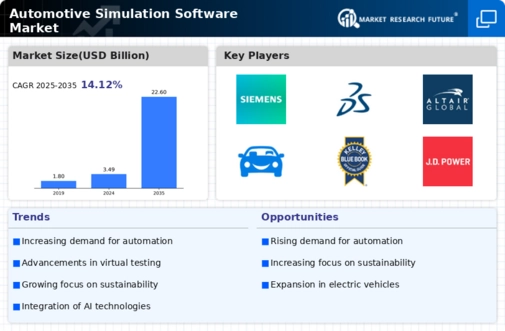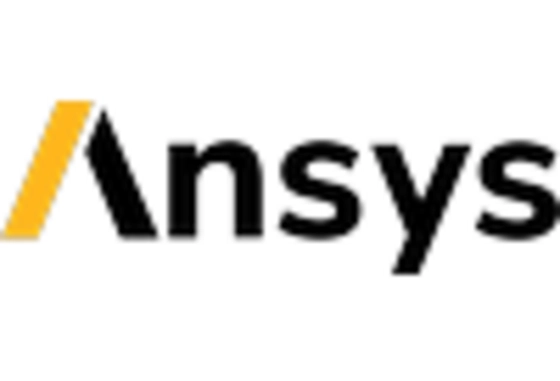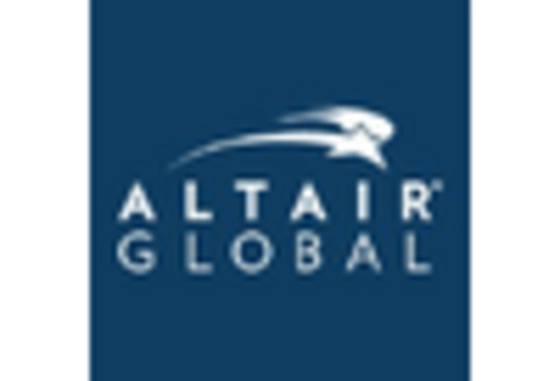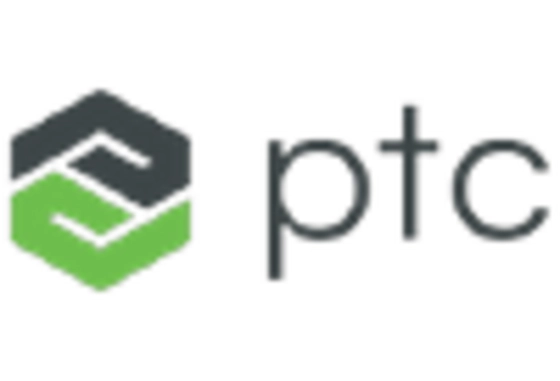Increasing Demand for Fuel Efficiency
The Automotive Simulation Software Market is experiencing a surge in demand for fuel-efficient vehicles. As consumers become more environmentally conscious, manufacturers are compelled to innovate and optimize their designs. Simulation software plays a crucial role in this process, allowing engineers to model and analyze vehicle performance under various conditions. According to recent data, the automotive sector is projected to invest significantly in simulation technologies, with estimates suggesting a growth rate of over 10% annually. This trend indicates that companies are prioritizing software solutions that enhance fuel efficiency, thereby driving the Automotive Simulation Software Market forward.
Growth of Connected Vehicle Technologies
The Automotive Simulation Software Market is witnessing growth driven by the proliferation of connected vehicle technologies. As vehicles become increasingly integrated with communication systems, manufacturers are utilizing simulation software to ensure seamless connectivity and functionality. This integration allows for real-time data exchange, enhancing user experience and safety. Market analysis suggests that the connected vehicle segment is set to expand significantly, with simulation tools being essential for testing various scenarios. This trend indicates a robust demand for automotive simulation software, as companies strive to stay competitive in an evolving landscape.
Advancements in Vehicle Safety Technologies
The Automotive Simulation Software Market is increasingly influenced by advancements in vehicle safety technologies. As regulatory bodies impose stricter safety standards, manufacturers are leveraging simulation software to test and validate safety features before physical prototypes are built. This approach not only reduces development costs but also accelerates time-to-market. Recent statistics indicate that the market for automotive safety systems is expected to reach substantial figures, with simulation software being a key enabler. Consequently, the demand for sophisticated simulation tools is likely to rise, further propelling the Automotive Simulation Software Market.
Rising Investment in Research and Development
The Automotive Simulation Software Market is benefiting from rising investments in research and development (R&D) across the automotive sector. As competition intensifies, manufacturers are allocating substantial resources to innovate and improve vehicle performance. Simulation software serves as a vital tool in R&D, enabling engineers to conduct virtual testing and optimize designs efficiently. Recent reports indicate that R&D spending in the automotive industry is projected to increase, with simulation technologies being a focal point. This trend suggests a promising outlook for the Automotive Simulation Software Market, as companies seek to leverage advanced tools to enhance their product offerings.
Regulatory Compliance and Environmental Standards
The Automotive Simulation Software Market is significantly impacted by the need for regulatory compliance and adherence to environmental standards. Governments worldwide are implementing stringent regulations aimed at reducing emissions and promoting sustainable practices. In response, automotive manufacturers are increasingly adopting simulation software to evaluate compliance with these regulations during the design phase. This proactive approach not only mitigates risks but also enhances the overall sustainability of vehicle production. Data suggests that the market for simulation software is likely to grow as companies seek to align their products with evolving environmental standards, thereby driving the Automotive Simulation Software Market.


















Leave a Comment